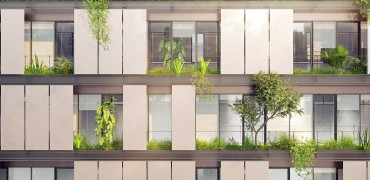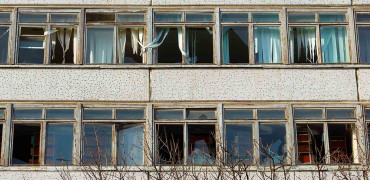Vegetation is an essential element in the future of house building, well living really!
As architects, specifiers and planners continue to embrace passive solar building in a desire to combat our unrestrained climate crisis, planting and vegetation always has and will become an essential element.
Plants, trees and landscaping features can provide shade and wind shelter. They can assist in storm water control and reduce erosion.
Greenery can not only make your space more attractive, but we also know for a fact that having access to a view of nature and being amongst the colour green increases our mental and physical wellbeing.
If we wish to halt climate change then we must give planting the green light
Designed for living
Plants can simply fulfil different functions. For example trees with dense and persistent leaves protect from wind.
Deciduous planting is seasonal and can provide shade during the hottest months and allow winter sun when colder.
Climbing plants and vines can become a thermal protector and a sun preventer.
When designing a building, we should be considering:
- Can we access the winter sun for warmth?
- How much shade do we need?
- How can we provide shelter from strong winds to protect from erosion?
- Can we enhance the cooling breeze and harness it?
- Do we need our privacy and how much?
Tackling floods
Plants can be a passive design tool, essential for reducing runoff. Instead of grass verges, by planting slightly below street level with rushes and water loving plants we can slow down rainwater and protect against flooding.
As floodwaters are literally on the rise, this climate disaster can threaten lives, properties, and can destroy vital infrastructure. Flood damage causes long term, costly, and disruptive effects on a local community.
Simply put, green filter systems are floating water plants. As water flows under and through the plants, harmful substances and pathogens are reduced by the root balls and bacteria.
Large, mature trees can reduce the volume of rainwater that hits the concrete. Trees catch water and hold it in the canopy. From there it can gradually evaporate. On average a large tree can hold 500-650 litres! This can equate to 20-40% of average rainfall.
Avoiding heat build up
Global heating has warmed our summers by more than a degree since the 1970s. Up until 2003, the hottest day on record in the UK stood at 38.5°C. In 2019 that became 38.7°C and continued into 2022 with 40.3°C.
Planting can help reduce this heat build up. Trees provide shade, a canopy with a lower level of shrubs can block low angled rays. During the winter the leaves will drop and allow winter sun to penetrate.
In the future our designers need to use winter and summer sunset points to determine the correct and most effective placement for our planting.
Selecting native plants to the area and drought-tolerant species can help conserve water and promote a healthy ecosystem, in a move called Xeriscaping.
Ground cover such as gravel or mulch can reduce urban runoff and maximise infiltration. Groundwater supplies can be recharged and erosion is reduced. Rainwater features can be included to capture stormwater.
Eating the landscape
Our outdoor spaces can also be edible if we plan accordingly.
By incorporating edible planting we can reduce our reliance on commercial produce and, if planned with a community in mind, it helps to create a more sustainable lifestyle.
Fruit trees, berries, vegetables gardens, allotments, all of these green spaces can provide produce for a home, an apartment block, or an office development.
And if you aren’t going to take advantage of this natural bounty, then there are plenty of birds, animals and insects that will, so planting edible choices can help tackle the biodiversity crisis as well.
A fresh way of thinking
Air brought into our homes for ventilation is also important. Greenery outside cools the air before it reaches us, cooler air saves energy.
Plants not only cast shade and protect from sunlight but their leaves also transpire moisture. Water on the leaves surface is released which cools dry air through evaporation. reducing air temperatures by up to 5c. The temperature below a tree can be up to a huge 14°C lower.
Energy efficient landscaping can support our move towards passive building design, a token gesture will not do.
Vertical gardens, green roofs, and even exterior wall colour can assist in energy conservation.
There is now a huge bulk of evidence proving the environmental and social benefits of green spaces, it is important that these don’t get forgotten in our race to consume.
If we wish to halt climate change then we have to give planting the green light.
Kirsty Hammond is Publisher of Specifier Review




